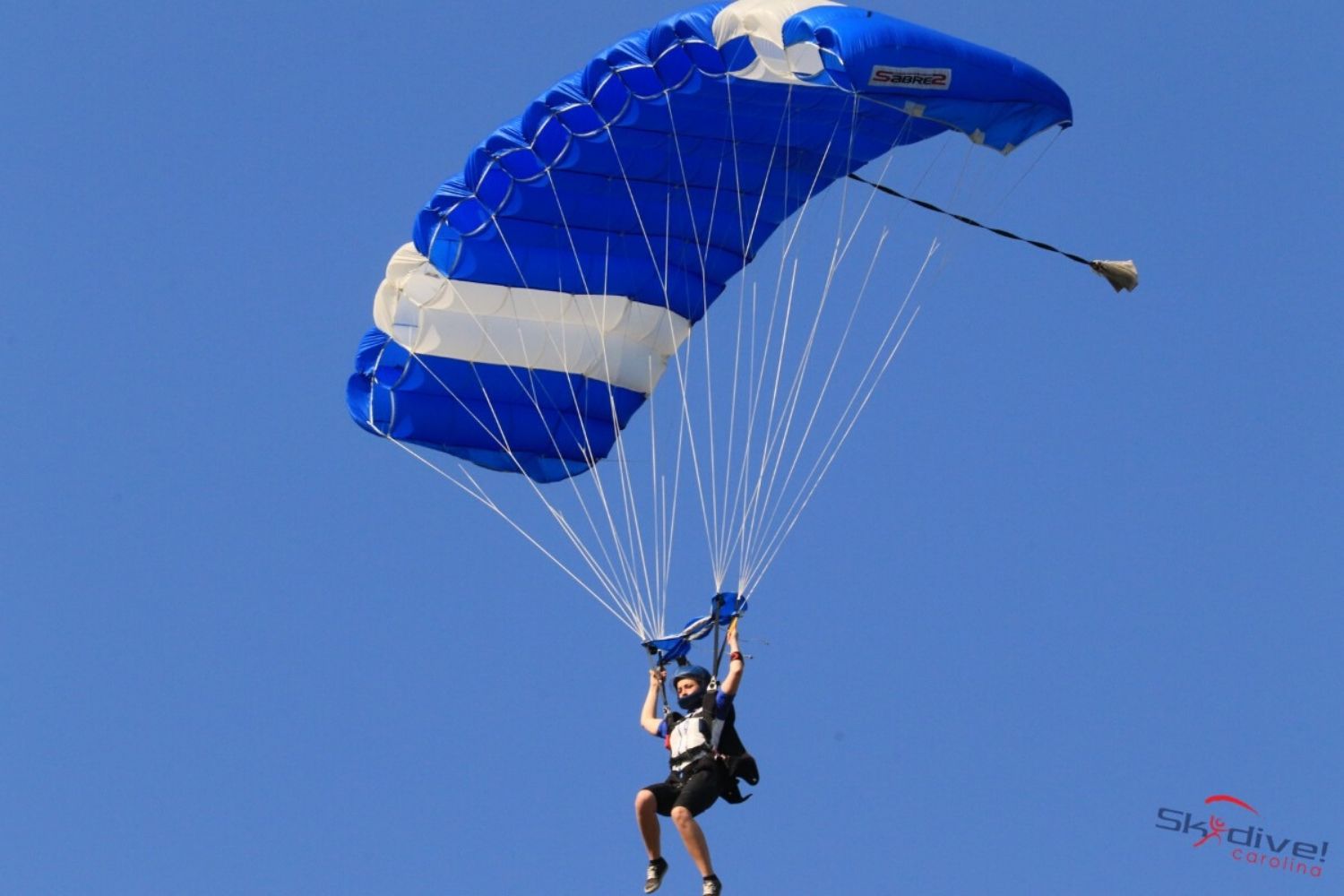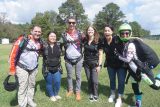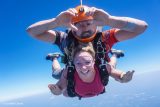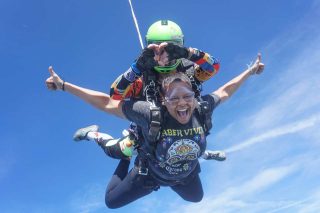Breaking Down the Misconceptions About Parachute Failure
Skydiving
2 years ago
Understanding Parachute Malfunctions
“What happens if your parachute fails!?” It’s hands down the most frantically asked question by new skydivers – it’s a valid concern! Many people believe that a parachute failure simply means the parachute failed to come out of the container (that’s the “backpack” skydivers wear), and that just isn’t the case. Let’s peer more into the actual odds of a parachute failing, the different types of parachute malfunctions, and their resolutions.

Two Types Of Parachute Malfunctions
What is a parachute malfunction? A malfunction (commonly referred to in short as a “mal”) is when the parachute (aka canopy) doesn’t do what it is designed to do. There are two categories of malfunctions: total and partial.
- Total Malfunction: Has a parachute failed to open? For sure, but it’s rare, like … really rare. A total mal is when the main parachute opens 0%. If the main canopy stays in the container (which would happen if the skydiver is unable to deploy it), the canopy cannot be assessed for functionality because it’s not there. Total malfunctions are considered high speed, and the skydiver will immediately begin emergency procedures to deploy their reserve canopy.
- Partial Malfunctions: A partial mal is when the main canopy deploys and doesn’t fly as it is designed to – super annoying. Depending on the severity of the malfunction, the skydiver will either go through their emergency procedures or use their training to correct the malfunction before hitting their hard deck. What’s a hard deck? A hard deck is a predetermined altitude that the skydiver has for having a fully functioning canopy above them. If the malfunction cannot be corrected prior to hitting their hard deck (typically around 2,000-2,500 feet), the skydiver will cut away their main canopy and deploy their reserve.
What Determines If A Parachute Is Okay?
Skydivers use the Three S’s to determine if their canopy is good to go and safe to land! These are evaluated in successive order on every single jump. The Three S’s are square, stable, and steerable.
- Square: When the canopy opens above the head the skydiver will look at it and see it take the shape of a rectangle – woo! If the canopy fails to inflate properly and does not look like a rectangle, the skydiver will either A) determine what is wrong and correct it, or B) cut it away! The other two S’s don’t matter if the canopy isn’t square, to begin with.
- Stable: Is the canopy flying straight? Skydivers give parachutes input to guide them to specific parts of the sky and ground, but the canopy should be flying straight and feeling even when the skydiver is doing nothing to change the direction.
- Steerable: Okay, cool, we have a square and stable canopy, now it’s time to check if we can steer it! At this stage, the skydiver will ensure that they can safely guide their canopy to the ground by turning to the left, and right, and flaring the canopy. A flare is when both handles (toggles) are simultaneously pulled straight down to slow the canopy down at landing time.
If one of these S’s is not met, the canopy is not conducive for skydiving. At this point, the jumper will initiate their emergency procedures and get rid of that thang to use their reserve instead!

What are Skydiving Emergency Procedures?
Emergency Procedures (EPs) are hammered into the brains of skydivers so many times we could do them in our sleep. EPs simply refer to the act of cutting away the main canopy (bye-bye-bye) and deploying the reserve canopy. This is done by pulling the two handles located on the front of the skydiving rig, one immediately after the other.
What If I Can’t Do My EPs!?
Worry not! Let’s delve a bit deeper into two nifty pieces of technology that have significantly advanced the safety of the skydiving world: The AAD and the RSL.
- Automatic Activation Device (AAD): An AAD is a small computer (like, super-duper small) with a tiny blade designed to cut the cord to deploy the reserve parachute in the event that the skydiver can’t. An AAD is located in the skydiving rig and is armed and checked prior to the skydive. The AAD calculates the air pressure on the ground once the skydiver is airborne, and uses this to determine altitude. If the skydiver is going too fast at too low of an altitude, the AAD will fire and deploy the reserve parachute. Has anyone survived parachute failure while passed out? Yes, because AADs save lives!
- Reserve Static Line (RSL): RSLs are lanyards that are positioned within the skydiving rig to act as a tripwire and deploy the reserve automatically as the main is cutaway. The RSL is attached to the main canopy’s cutaway system. Skydivers should never rely 100% on an RSL and always go through the entirety of their EPs. When would an RSL be beneficial? If the handle to deploy the reserve cannot be reached!
What Are The Odds of a Parachute Failing?
The United States Parachute Association (USPA) are statistics fanatics, which means we can study safety trends in skydiving. On average, every 1 out of 1,000 skydives (tandem and solo) will have some type of malfunction, but this doesn’t necessarily mean a cutaway occurs! Remember, many malfunctions are easily correctable. In 2022, the USPA reported 20 skydiving-related fatalities out of almost 4 million skydives. The vast majority of these errors are jumper errors made by experienced skydivers, and most are seen as totally preventable had proper precautions been taken. In 2021, one out of every 721 skydivers used their reserve canopy. Skydiving is an extreme sport that comes with inherent risk. At Skydive Carolina, we pride ourselves on putting safety and learning first, always, and promote constant growth to mitigate risk.
The adventure of a lifetime is only one click away – book your tandem today! Please reach out to us with any questions or concerns, we can’t wait to soar the skies with you!




